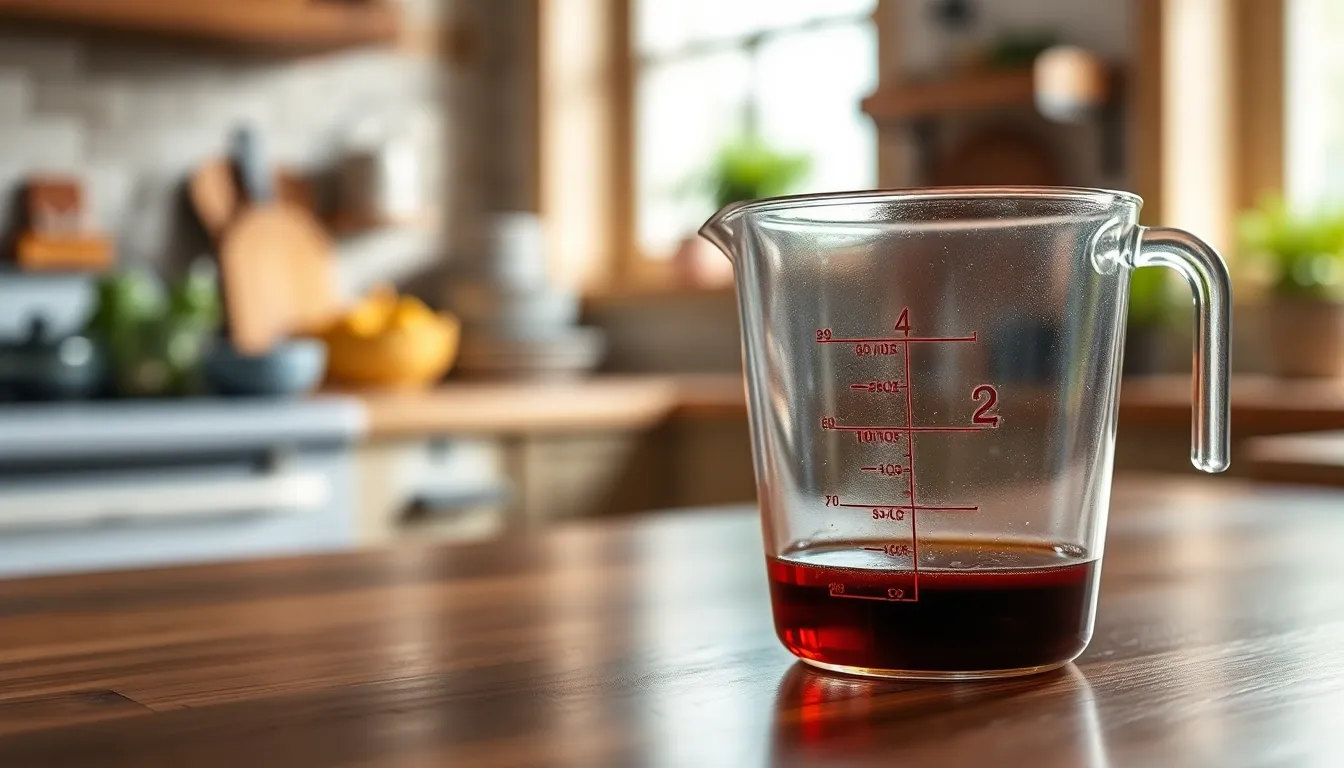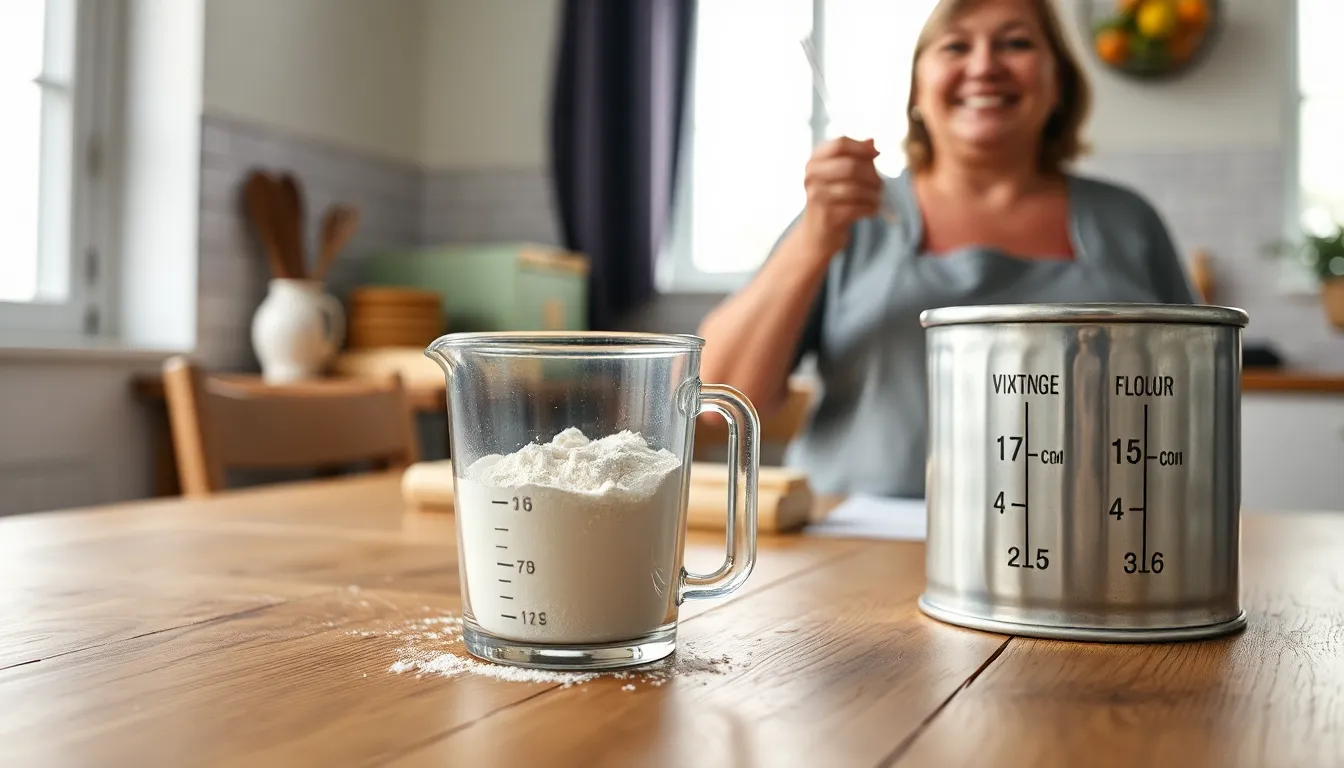When it comes to measurements, things can get a bit tricky, especially when fractions enter the mix. Take “half of 1 1/2,” for example. At first glance, it might seem like a math problem that requires a PhD to solve. But fear not! Understanding this fraction is easier than finding a matching sock in a laundry basket.
Table of Contents
ToggleUnderstanding Half of 1 1/2
This section delves into the concept of finding half of 1 1/2, breaking down the process into manageable parts.
Explanation of Fractions
Fractions represent parts of a whole. They consist of a numerator and a denominator, where the numerator indicates how many parts are considered, and the denominator shows the total parts in the whole. In the case of 1 1/2, it combines both a whole number and a fraction. This form allows for quick calculations, especially when determining halves or other fractional values.
Converting Mixed Numbers
Mixed numbers, like 1 1/2, can be converted into improper fractions for easier calculations. To convert, multiply the whole number by the denominator and add the numerator. This example calculates as follows: 1 times 2 equals 2, then add 1 to get 3, resulting in 3/2. Recognizing this conversion simplifies finding half of mixed numbers, making mathematical operations more straightforward.
Calculation of Half of 1 1/2

Calculating half of 1 1/2 involves a straightforward method. Start by converting the mixed number into an improper fraction. Since 1 1/2 equals 3/2, finding half of this requires multiplying by 1/2.
Step-by-Step Calculation
First, identify the mixed number. Convert 1 1/2 to an improper fraction, resulting in 3/2. Next, multiply 3/2 by 1/2. This multiplication yields (3 x 1)/(2 x 2), which simplifies to 3/4. Therefore, half of 1 1/2 equals 3/4.
Simplifying the Result
To simplify the result further, consider the fraction 3/4. This fraction is already in its simplest form since the numerator and denominator share no common factors. Recognizing that 3/4 represents three parts out of a total of four also enhances understanding. Thus, the final answer remains 3/4, affirming clarity in fractional representation.
Practical Applications
Understanding “half of 1 1/2” has practical applications in various situations. It facilitates cooking, daily budgeting, and more.
Cooking and Recipes
Half of 1 1/2 serves as a common measurement in cooking. Recipes often require precise amounts of ingredients. For instance, halving a recipe that calls for 1 1/2 cups of flour leads to needing 3/4 cup. This calculation ensures proper ingredient proportions and helps maintain flavor and texture. Similarly, adjusting servings for guests involves using fractional measures. Experience shows that many home cooks benefit from mastering these calculations, reducing food waste in the process.
Math in Everyday Life
Math frequently emerges in everyday activities, and understanding fractions plays a crucial role. Determining discounts during shopping often requires calculations involving half or other fractions. If an item priced at $15 is discounted by half, its new price becomes $7.50, demonstrating practical use of fractions. Additionally, it aids in time management, like splitting an hour evenly among tasks. Each of these scenarios illustrates the importance of grasping fractional concepts in daily tasks.
Common Misconceptions
Understanding fractions, especially mixed numbers, often leads to misunderstandings. Many people confuse mixed numbers with improper fractions. A mixed number, like 1 1/2, includes a whole number and a fraction. On the other hand, an improper fraction, such as 3/2, contains a numerator larger than its denominator. Misconception arises when individuals believe they can apply whole number operations without recognizing the fractional component’s importance. Properly converting mixed numbers to improper fractions aids in calculations, simplifying processes like finding half of 1 1/2.
Errors frequently occur in division involving fractions. Some assume they can divide mixed numbers directly without conversion. One common mistake involves dividing a mixed number by a whole number, leading to incorrect results. The right approach requires converting the mixed number to an improper fraction first. For example, transforming 1 1/2 into 3/2 ensures accurate calculations. After conversion, dividing 3/2 by 2 becomes straightforward. Understanding these steps reinforces clarity in fractions, preventing mistakes in calculations.
Understanding how to calculate half of 1 1/2 simplifies the often intimidating world of fractions. By converting mixed numbers into improper fractions, individuals can tackle mathematical problems with confidence. The result of 3/4 not only exemplifies the process but also highlights its practical applications in everyday scenarios like cooking and budgeting.
Grasping these concepts can enhance one’s ability to manage tasks that require precise measurements or calculations. As individuals become more comfortable with fractions, they’ll find that these skills translate into greater accuracy in various aspects of life. Embracing the simplicity of these calculations can lead to improved problem-solving abilities and a deeper appreciation for the role of fractions in daily activities.



